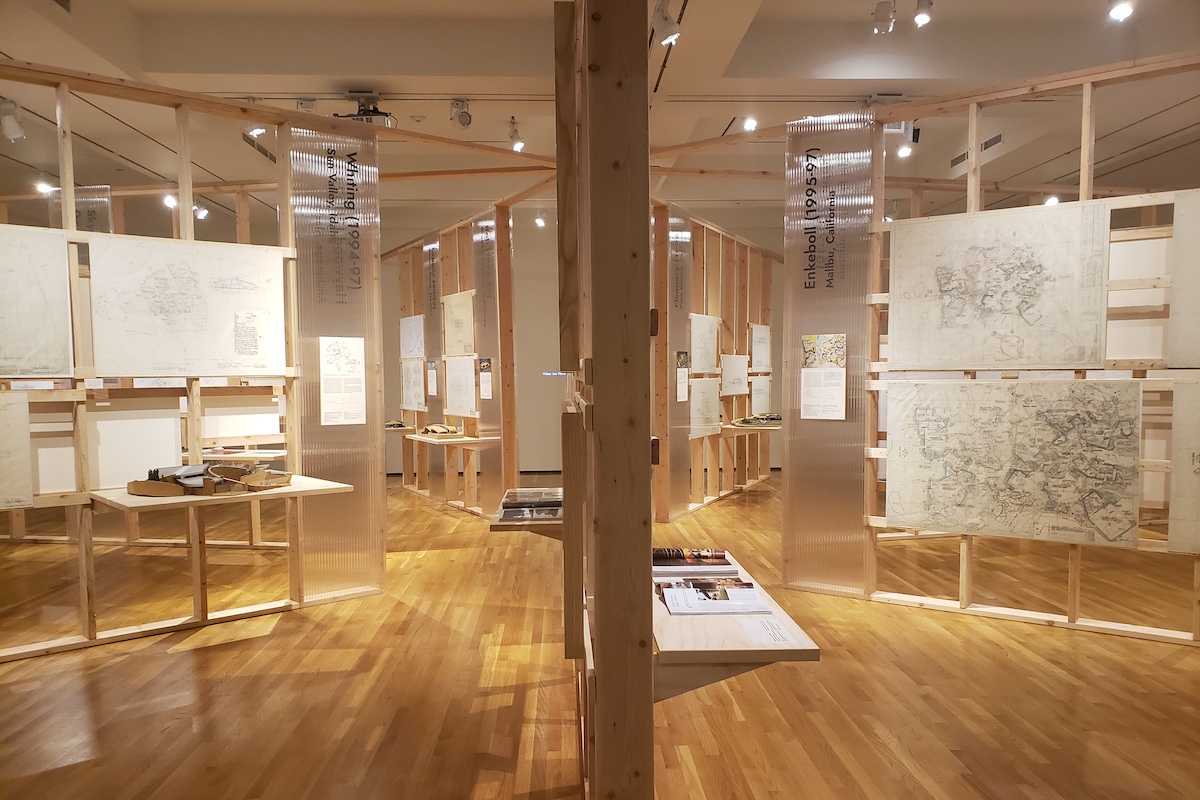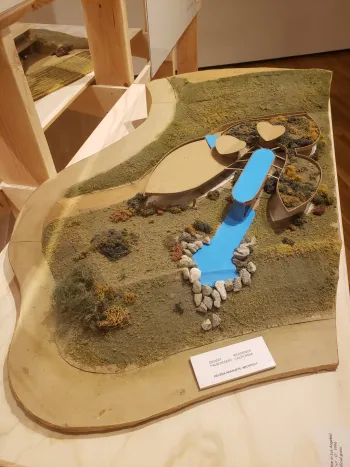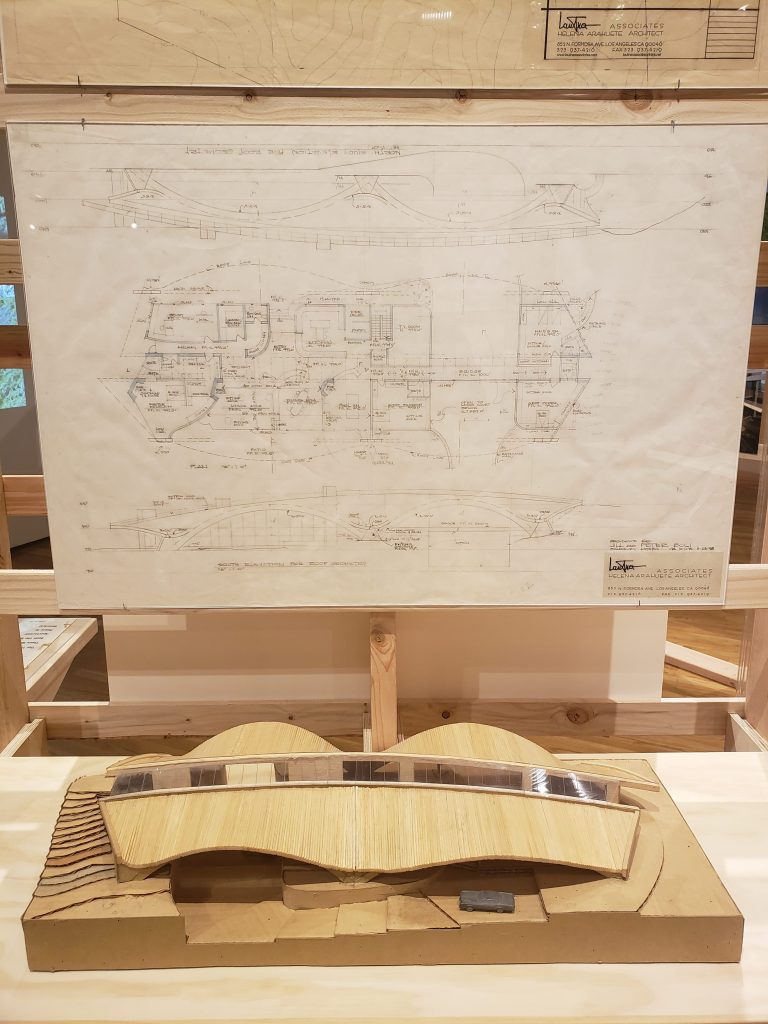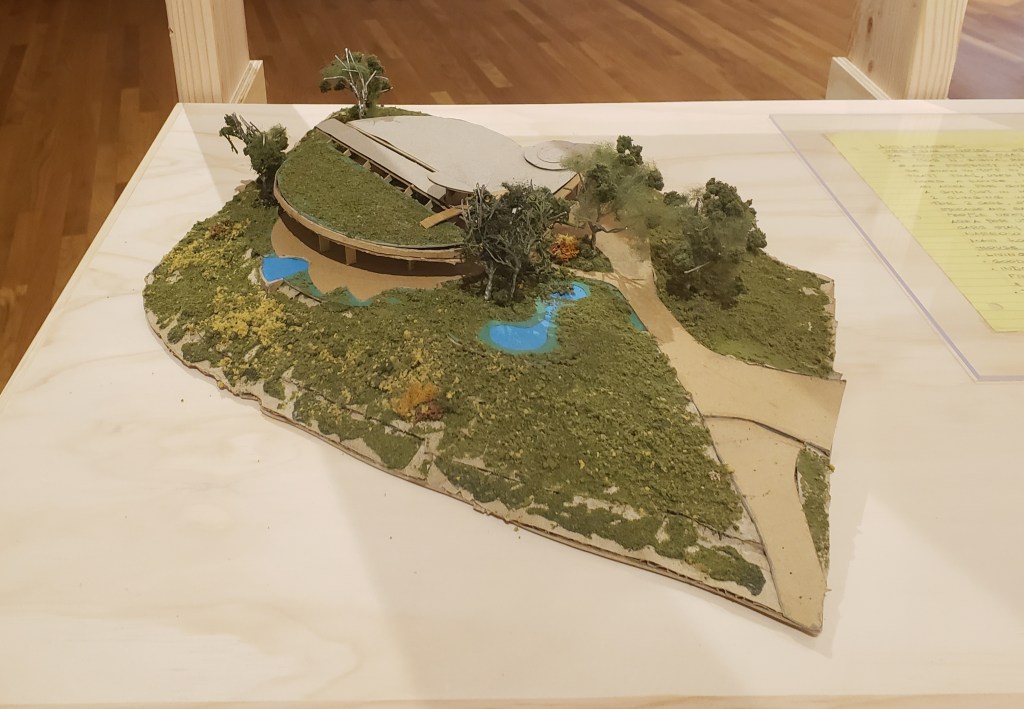At Home with Nature
UCSB’s AD&A Museum Hosts Retrospective of Work by ‘Organic Architect’ Helena Arahuete

In launching its fall academic season, UCSB’s Art, Design & Architecture Museum turns a respectful and propitious spotlight on the third medium in the AD&A equation. The attention, built around the fascinating new exhibit From Within: The Architecture of Helena Arahuete, also reflects the 60th anniversary of the university’s widely acclaimed Architecture and Design Collection, founded by the late architectural historian of note David Gebhard. It was the richness and depth of that collection that led to the museum’s institutional identity and title switch many years ago, expanding beyond the realm of just fine art.

Other factors give the new show added significance, not the least of which is the fact that it’s the first retrospective of the Belgian-born and Los Angeles–based Arahuete, a rare woman working diligently and creatively in a field that is still male-dominated. Silvia Perea, curator of the collection, has assembled a portrait of the architect via models, her elaborate drawings, photography, and other artifacts, cleverly laid out in a main gallery partitioned with wood frames into airy “rooms.”
The sum effect of the exhibit nicely relays the story of a free-thinking proponent of “organic architecture,” who was an assistant to famed John Lautner for 23 years before breaking out on her own in 1994. While Arahuete is a modernist by nature and impulse, rather than adhering to specific styles or “-isms” within architecture, she has clung to processes and philosophies concerning a more “organic” approach to the practice.
Strongly influenced early on by the Italian architect/historian Bruno Zevi’s classic book Towards an Organic Architecture — mostly dealing with Frank Lloyd Wright’s work and thinking — as well as Lautner’s work, Arahuete has sought to find means of harmonizing elements of nature and architecture. Natural forms and integrative environments play directly into her solutions to each assignment, which can take on fantastical properties — even when the designs never ultimately result in finished, manifested structures.
We can see how Lautner’s much-lauded weekend house in Acapulco, the “Marbrisa” house, serves as a departure point for Arahuete’s own imaginative design leaps. With its extreme cantilevered and asymmetrical, leafy-shaped slabs of concrete, integrated with its high waterfront position, the Lautner Acapulco house resembles such later Arahuete designs as her Palm Desert house and Magee House, with its organic forms folded into the hosting landscape.

Water plays a strong part in Arahuete’s designs, as a resource crossing over into human uses and feng shui, as well as a literal force of the kind of fluidity embedded in her concepts. Her Anchorage house — with views of the nearby Denali keenly capitalized upon in the design, a miniature waterfall cascading from a perch in the two-story house structure — recalls Wright’s famed riverside Fallingwater house outside of Pittsburgh. Her Palm Desert design features a rooftop infinity-edged pool and an appearance of large, oblong slabs seemingly elevated from the ground itself, to accommodate the ground-hugging residence component below.
As with many architectural projects and plans, especially of a challenging technical or radical aesthetic bearing, many of Arahuete’s idealistic projects went unmade, for various reasons. But one masterful design, the Roscoe House in Solano Valley, did exist in the material world. Unfortunately, it was destroyed in the 2017 Atlas Fire, but photographic documentation, alongside a model and drawings, capture the awe and inventiveness of the magical hilltop project, with wraparound views of Northern California and the Golden Gate Bridge far below. Panoramic scenery effectively enters the interior via extensive glass windows that morph into walls. Voilà, an interior/exterior duality is resourcefully achieved.
Water again plays a central role in her thinking here. The structure’s irregular pentagon surrounds an interior pool, while a long outdoor pool yearns toward the horizon. It is (and now regrettably was) a thing of wonder. From Within chronicles an architect with her own inner sense of wonder and vision for a new paradigm of what architecture can be and what it can stand for in the world. —Josef Woodard
From Within: The Architecture of Helena Arahuete shows through December 17 at UCSB’s Art, Design & Architecture Museum. For more information, see museum.ucsb.edu.






You must be logged in to post a comment.